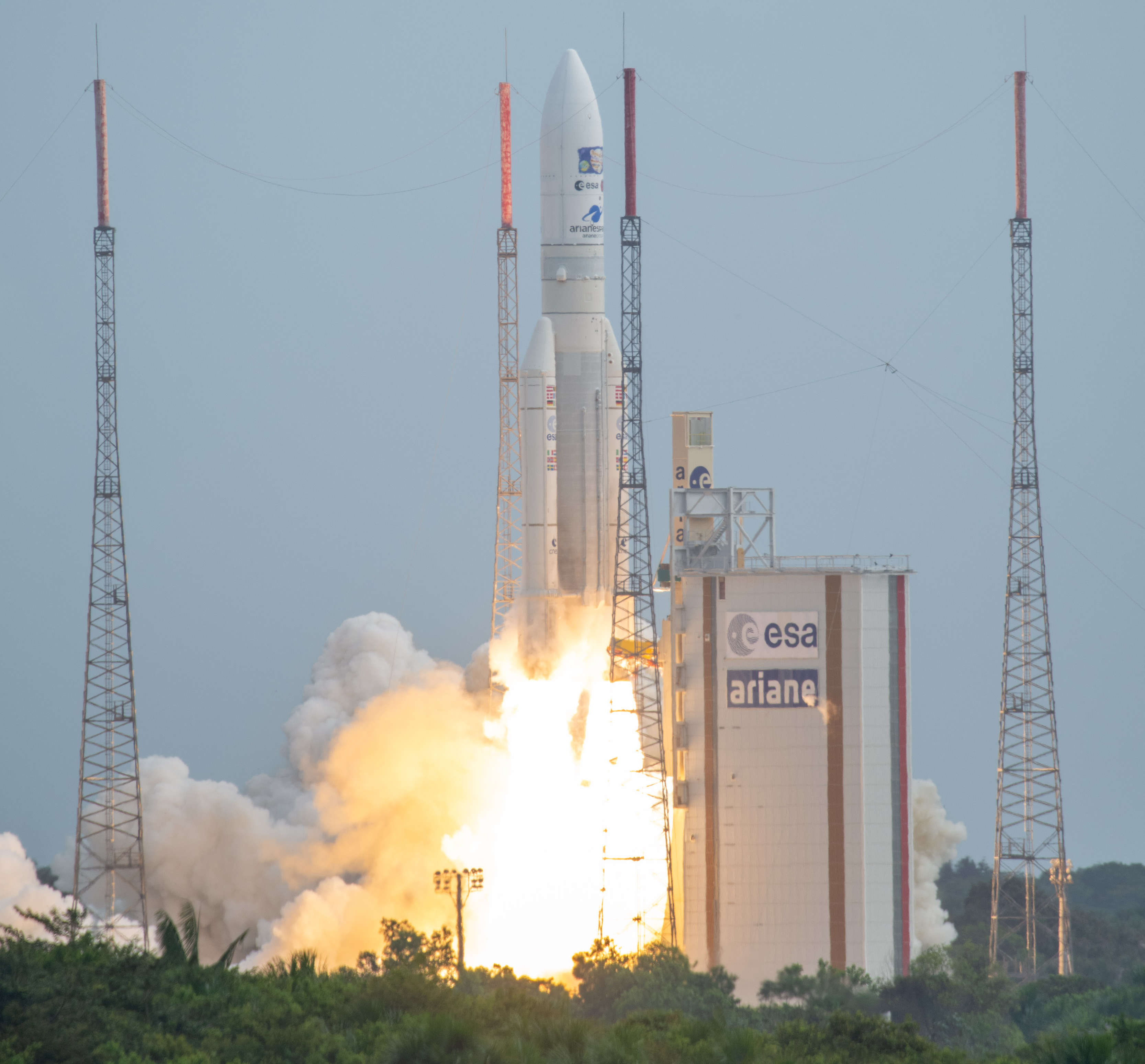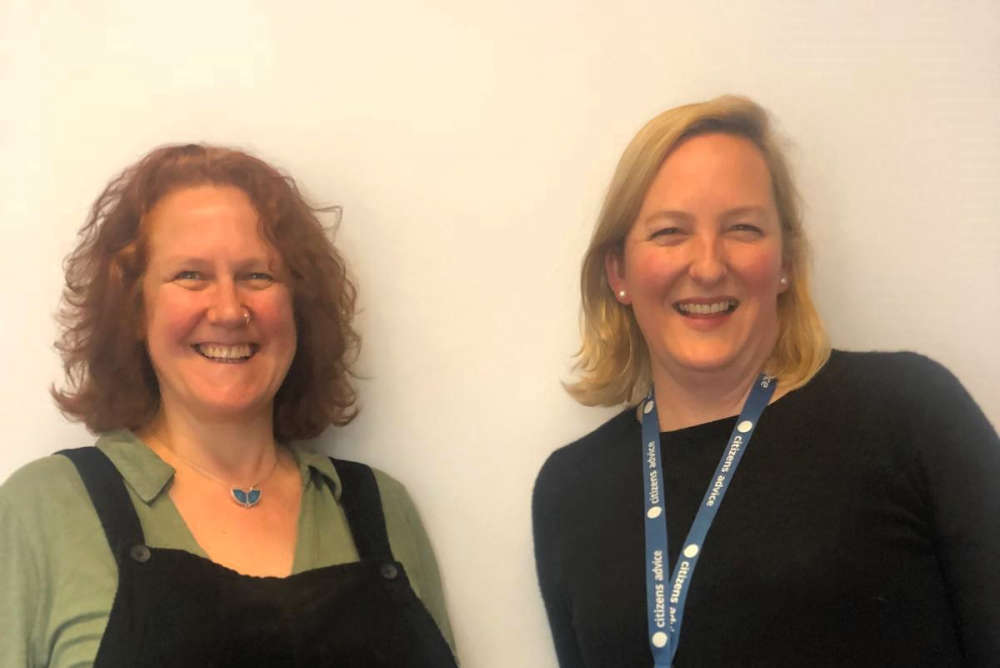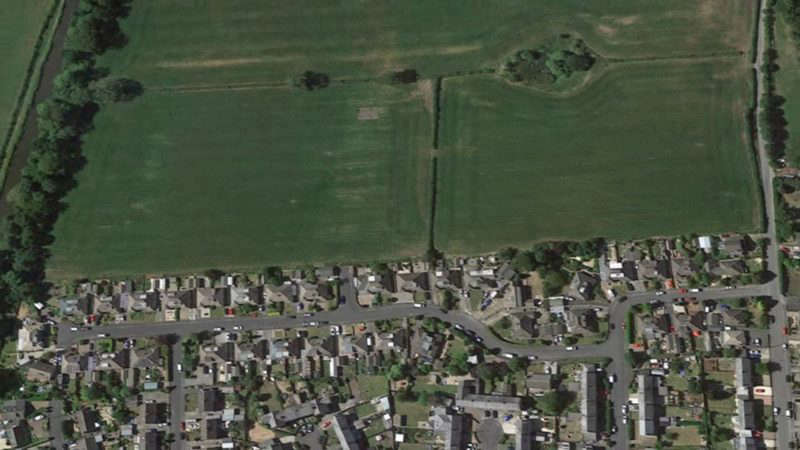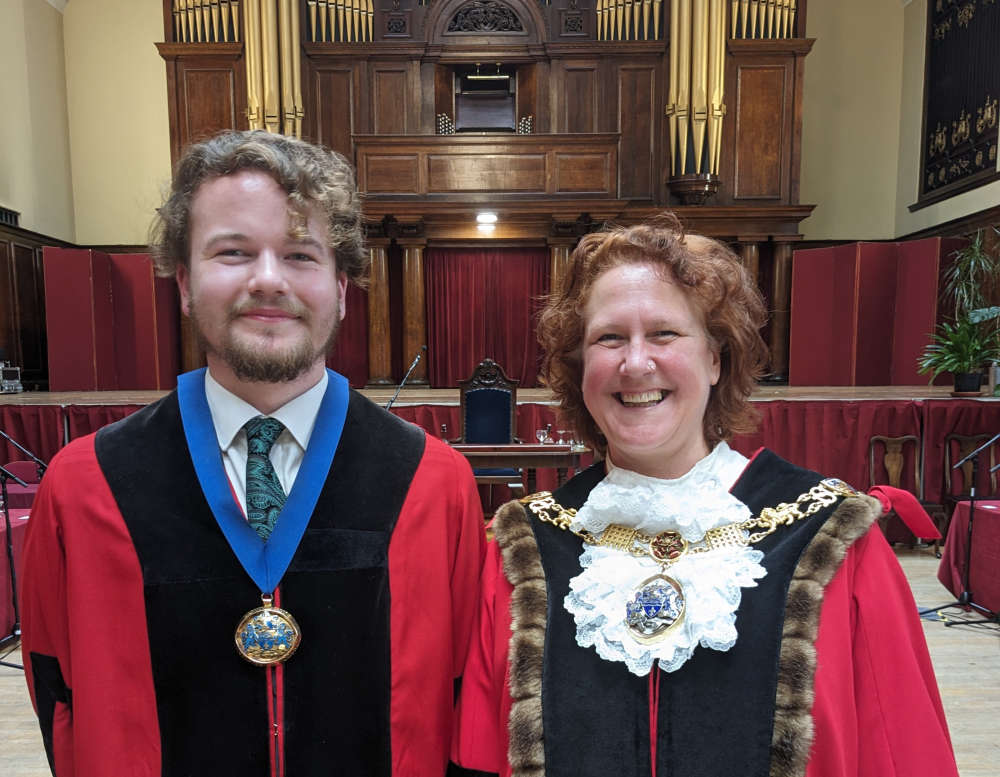
A physicist from Lancaster University has helped to develop technology on board a spacecraft heading to the planet Jupiter.
Dr Chris Arridge has helped to develop instrumentation on the European Space Agency (ESA)’s Ariane 5 spacecraft which launched from its spaceport in French Guiana.
The JUICE (Jupiter Icy Moon Explorer) mission will investigate the planet's main icy satellites Europa, Ganymede and Callisto as potential habitable bodies and in particular seek to understand their interiors and how they couple to the surface.
It blasted off on April 14 on an eight-year journey to reach the icy moons of the planet, after being delayed for a day due to bad weather.

Dr Arridge is Reader in Planetary Physics at Lancaster University where he is a co-investigator on the JUICE magnetometer instrument 'J-MAG' led by Imperial College London.
He said: “The spacecraft will take about eight years to reach Jupiter, but we will be doing science along the way.
"Once JUICE reaches Jupiter it will orbit the planet, doing quick flybys of the icy satellites, before going into orbit around Ganymede itself. It will end its mission with a controlled crash on the surface.”
JUICE will also explore Jupiter as an “archetype” for gas giant planetary systems – what can Jupiter and its planetary system tell us about gas giants in general, either in our solar system or further afield.
J-MAG will measure magnetic fields around Jupiter and around Europa, Ganymede and Callisto.
These measurements are important because, amongst other information, they yield information about salty liquid oceans underneath the icy crusts of the satellites.
When these changing magnetic fields reach these icy worlds, they are modified by what they encounter inside – like a salt water ocean which is electrically conducting.
“By measuring how these changing magnetic fields are affected by the moons we can work out what is inside them," said Dr Arridge.
"How thick the oceans are, how deep they are under the icy surface and how salty they are, for example.”
Ganymede - the largest moon in the solar system - is the main focus of the mission.
“Ganymede is the only moon in the solar system known to have its own magnetic field like that of the Earth," he said.
"You could use a compass on Ganymede, just like you can on Earth.
"JUICE and J-MAG will also study this magnetic field and the consequences of Ganymede having its own magnetic field. For example, there are northern lights on Ganymede and JUICE and J-MAG will look at how these are produced.”
J-MAG is located on a 10.6m arm that keeps the instrument far away from any sources of magnetic fields on the spacecraft that would otherwise contaminate the data.



 INTERVIEW: Award-winning festival set to celebrate Italy in Lancaster
INTERVIEW: Award-winning festival set to celebrate Italy in Lancaster
 Lancaster MP welcomes return of mobile phone coverage
Lancaster MP welcomes return of mobile phone coverage
 INTERVIEW: Historic Heysham pub to reopen as new management aims to 'bring community together'
INTERVIEW: Historic Heysham pub to reopen as new management aims to 'bring community together'
 Traffic diverted as Lancaster quay closed for rail bridge works
Traffic diverted as Lancaster quay closed for rail bridge works
 Caravan fire in Morecambe spreads to two other vehicles
Caravan fire in Morecambe spreads to two other vehicles
 Morecambe's two bathing beaches receive Seaside Awards amid calls to improve water quality
Morecambe's two bathing beaches receive Seaside Awards amid calls to improve water quality
 Lancaster remains best university in North West England in Complete University Guide
Lancaster remains best university in North West England in Complete University Guide
 'Music with the Mayor' initiative launched to support North Lancashire’s Citizens Advice
'Music with the Mayor' initiative launched to support North Lancashire’s Citizens Advice
 DIARY: Beyond Radio presenter fighting cancer continues his '60 Before 60' challenge
DIARY: Beyond Radio presenter fighting cancer continues his '60 Before 60' challenge
 BIG FIGHT COUNTDOWN: Tyson Fury's father John headbutts Usyk supporter ahead of undisputed heavyweight title fight
BIG FIGHT COUNTDOWN: Tyson Fury's father John headbutts Usyk supporter ahead of undisputed heavyweight title fight
 Decision to refuse Galgate housing scheme planning permission upheld following public inquiry
Decision to refuse Galgate housing scheme planning permission upheld following public inquiry
 INTERVIEWS and PHOTOS: The story of Highest Point festival 2024
INTERVIEWS and PHOTOS: The story of Highest Point festival 2024
 INTERVIEW: Lancaster prison officer backed by Tyson Fury wins sport contest ahead of Miss England bid
INTERVIEW: Lancaster prison officer backed by Tyson Fury wins sport contest ahead of Miss England bid
 VIDEO and INTERVIEW: Lancaster schoolboy, 10, makes drum 'n' bass DJ debut at Lancaster festival
VIDEO and INTERVIEW: Lancaster schoolboy, 10, makes drum 'n' bass DJ debut at Lancaster festival
 Highest Point 'Lancaster Rocks' night cancelled due to thunderstorms warning
Highest Point 'Lancaster Rocks' night cancelled due to thunderstorms warning
 Quad bike rider dies after road crash in Morecambe
Quad bike rider dies after road crash in Morecambe
 Morecambe guesthouse couple to star on reality TV show 'Four in a Bed'
Morecambe guesthouse couple to star on reality TV show 'Four in a Bed'
 PHOTOS: Northern Lights dazzle on Highest Point festival day one
PHOTOS: Northern Lights dazzle on Highest Point festival day one
 Mother and son unveiled as new Lancaster mayoral team
Mother and son unveiled as new Lancaster mayoral team
 New police and crime commissioner for Lancashire begins role
New police and crime commissioner for Lancashire begins role




